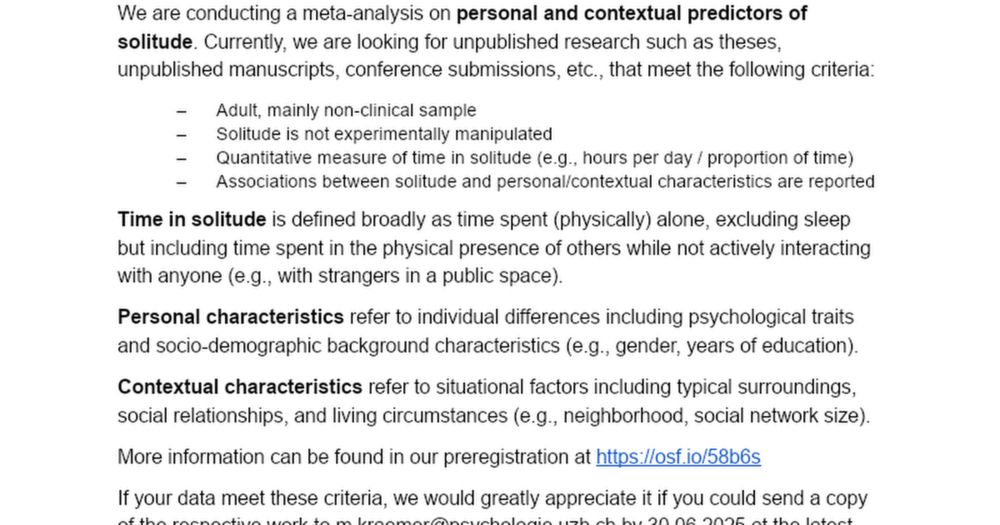Aleksa Kaurin
@aleksakaurin.bsky.social
1.8K followers
230 following
38 posts
#Antiracist Prof of Child & Adolescent Clinical Psychology Uni Wuppertal 🚟🐘| 🌱developmental psychopathology, suicide risk, NSSI, EMA 📱🤳📈📊📉
On 🤰🏻 leave
Posts
Media
Videos
Starter Packs
Reposted by Aleksa Kaurin
Reposted by Aleksa Kaurin
Reposted by Aleksa Kaurin
Reposted by Aleksa Kaurin
simine vazire
@simine.com
· 1d
Reposted by Aleksa Kaurin
Reposted by Aleksa Kaurin
Reposted by Aleksa Kaurin
Michael D. Krämer
@mdkraemer.bsky.social
· May 30

MA solitude: Call for unpublished data
Meta-analysis on solitude: Call for unpublished data Dear colleagues, We are conducting a meta-analysis on personal and contextual predictors of solitude. Currently, we are looking for unpublished r...
tinyurl.com
Reposted by Aleksa Kaurin
Reposted by Aleksa Kaurin
Milagros Nores
@mnores.bsky.social
· Jul 18

Adaptive functioning at age 18 years following severe early deprivation: Results of a randomized controlled trial - PubMed
In the present study, we examined adaptive functioning data from the Bucharest Early Intervention Project, a randomized controlled trial of foster care as an alternative to institutional care followin...
pubmed.ncbi.nlm.nih.gov
Reposted by Aleksa Kaurin
Reposted by Aleksa Kaurin
Reposted by Aleksa Kaurin
Reposted by Aleksa Kaurin
Reposted by Aleksa Kaurin
Reposted by Aleksa Kaurin
Reposted by Aleksa Kaurin
Reposted by Aleksa Kaurin
Reposted by Aleksa Kaurin
Reposted by Aleksa Kaurin














